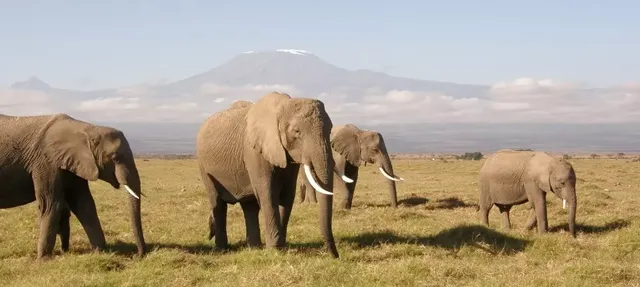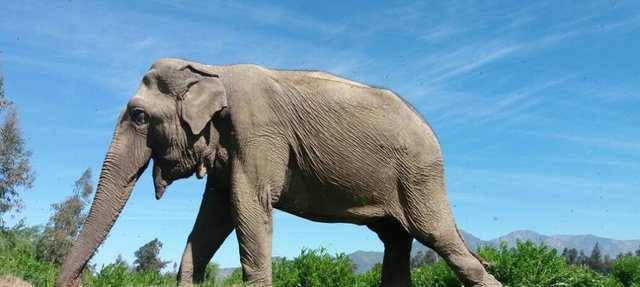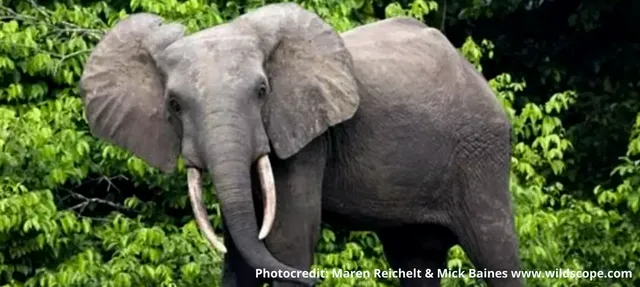History of Elephants

However, in 2001 scientific data identified that African elephants are actually two different species, the African Savannah, (Loxodonta Africana) and the African forest (Loxodonta cyclotis), The primary differences with their physical confirmation is that the African forest elephant is more slender, slightly smaller with straighter, smaller tusk and their ears are more
rounded. African savannah elephants are found in savannah zones in 37 countries south of the Sahara Desert.

The Asian elephant has four subspecies: Sri Lankan, Indian, Sumatran and Malaysian. Each of these sub species have slightly different characteristics, many are difficult to distinguish. Sri Lankan elephants tend to be slender with larger ears, and many Sri Lankan male elephants are tuskless. Indian elephants tend to be lighter-skinned, Sumatran elephants are slightly stockier and Malaysian elephants are a little smaller in stature. There are reports of pigmy elephants in Borneo but little is know about them due to the dense forest and inaccessible regions where they live. Elephants from Burma are not classified as a sub species but they tend to have a lot of hair and darker complexions.
"Mammoths most closely resemble Asian elephants, while Mastodons resemble African elephants.

African forest elephants inhabit the dense rainforests of west and central Africa.
Asian
Ramba in Chile
The Asian elephant has four subspecies: Sri Lankan, Indian, Sumatran and Malaysian. Each of these sub species have slightly different characteristics, many are difficult to distinguish. Sri Lankan elephants tend to be slender with larger ears, and many Sri Lankan male elephants are tuskless. Indian elephants tend to be lighter-skinned, Sumatran elephants are slightly stockier and Malaysian elephants are a little smaller in stature. There are reports of pigmy elephants in Borneo but little is know about them due to the dense forest and inaccessible regions where they live. Elephants from Burma are not classified as a sub species but they tend to have a lot of hair and darker complexions.
"Mammoths most closely resemble Asian elephants, while Mastodons resemble African elephants. "
The elephant taxonomic order, proboscidea, has only 3 members today, but it used to have over forty. Most of these thrived until the end of the last glacial period 12500 years ago. These creatures were generally similar in size to modern Asian elephants, although there were tiny dwarf elephants and the humongous deinotherium, 15 ft. (4.5 meters) tall and weighing 30,000 lbs. (14 tons).
Within proboscidea, the mastodon family mammutidae are modern elephants and the very famous mammoths. Mammoths most closely resemble Asian elephants, while Mastodons resemble African elephants. Mammoths had long curved tusks and were much hairier than even modern Asian elephants.
The last mammoth to go extinct was the woolly mammoth, whose numbers had dwindled as the climate warmed and was finally hunted to extinction in Europe, Asia, and the Americas 12000 years ago, although some populations isolated from humans persisted until as recently as 4000 years ago. Though the rock hyrax is the closest living relative to elephants, other close relatives include manatees and rhinoceroses.
African forest elephants inhabit the dense rainforests of west and central Africa.
Asian
Ramba in Chile
The Asian elephant has four subspecies: Sri Lankan, Indian, Sumatran and Malaysian. Each of these sub species have slightly different characteristics, many are difficult to distinguish. Sri Lankan elephants tend to be slender with larger ears, and many Sri Lankan male elephants are tuskless. Indian elephants tend to be lighter-skinned, Sumatran elephants are slightly stockier and Malaysian elephants are a little smaller in stature. There are reports of pigmy elephants in Borneo but little is know about them due to the dense forest and inaccessible regions where they live. Elephants from Burma are not classified as a sub species but they tend to have a lot of hair and darker complexions.
"Mammoths most closely resemble Asian elephants, while Mastodons resemble African elephants. "
The elephant taxonomic order, proboscidea, has only 3 members today, but it used to have over forty. Most of these thrived until the end of the last glacial period 12500 years ago. These creatures were generally similar in size to modern Asian elephants, although there were tiny dwarf elephants and the humongous deinotherium, 15 ft. (4.5 meters) tall and weighing 30,000 lbs. (14 tons).
Within proboscidea, the mastodon family mammutidae are modern elephants and the very famous mammoths. Mammoths most closely resemble Asian elephants, while Mastodons resemble African elephants. Mammoths had long curved tusks and were much hairier than even modern Asian elephants.
The last mammoth to go extinct was the woolly mammoth, whose numbers had dwindled as the climate warmed and was finally hunted to extinction in Europe, Asia, and the Americas 12000 years ago, although some populations isolated from humans persisted until as recently as 4000 years ago. Though the rock hyrax is the closest living relative to elephants, other close relatives include manatees and rhinoceroses.